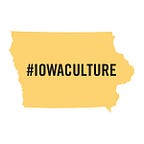Before Jackie Robinson, Iowans Played Both Sides of Baseball’s Color Barrier
Every spring, the sounds of baseball fill parks and stadiums across Iowa. Ground crews cut grass. Pitchers throw fastballs. Batters step up to the plate.
The rituals prompt knowing smiles: Winter has struck out and a new season is on deck.
Iowa’s connections to the major leagues run long and deep, and include six Iowans who are enshrined in the National Baseball Hall of Fame in Cooperstown, New York: Cap Anson of Marshalltown; Dave Bancroft of Sioux City; Fred Clarke of Winterset; Red Faber of Cascade; Bob Feller of Van Meter; and Dazzy Vance of Orient.
But the game’s connections with African-American communities in Iowa and across the country offer a broader, more nuanced sense of history.
In the late 1800s, African-Americans began playing baseball on college, military and company teams, and many filled out professional line-ups with white teammates.
Iowa’s history with integrated ball clubs dates to 1885 when the Keokuk team of the Western League signed Bud Fowler as its second baseman. Fowler, whose career began in 1878, is widely acknowledged as the first African-American to play professional baseball, according to the Society for American Baseball Research.
However, racism and Jim Crow laws forced him and other African-Americans off organized teams, and Anson – the Hall of Famer from Marshalltown – played a significant role in it.
Beginning in 1883, Anson – the best hitter of his generation – used his stature to drive African-Americans from the game, becoming the de facto leader of the segregation forces already at work in the game, according to SABR.
Although he wasn’t entirely responsible for baseball’s more than half-century of segregation, Anson’s bellicose attitude brought the issue front and center and began an open, blatant and successful effort to bar African-Americans from organized baseball, SABR said.
By 1887, owners of professional baseball teams reached a “gentleman’s agreement’ to exclude African-Americans from organized baseball.
Nevertheless, many African-American players, including Fowler, stayed in the game with teams on baseball’s barnstorming circuit, which wasn’t tied to any organized leagues.
They scheduled their own games and played throughout the country, plus Canada and Mexico. The circuit included professional and semi-pro teams, community teams and company teams.
So there was a built-in fan base for the sport when a group led by Andrew “Rube” Foster met in Kansas City and started the Negro National League in 1920. Soon other leagues formed, and Negro league baseball games became major social events and economic centerpieces in African-American communities.
Legendary players such as James “Cool Papa” Bell, John “Buck” O’Neil, Josh Gibson and Satchel Paige became household names, and the Kansas City Monarchs became one of the era’s most dominant teams.
Ironically, the Monarchs were owned by J.L. Wilkinson of Algona, Iowa, the only white owner of a Negro league team. He also signed Jackie Robinson to his first professional baseball contract and was elected posthumously to Cooperstown in 2006.
In Iowa, players such as Art Pennington had ties to Cedar Rapids, and Chet Brewer, Ernest Johnson and William Bell spent time in Des Moines — and they all played in the Negro leagues.
Today, Phil Dixon is keeping their stories alive. A one-man encyclopedia of baseball history, he is a former public relations official for the Kansas City Royals and co-founder of the Negro Leagues Baseball Museum in Kansas City.
In 1981, he decided to start sharing the Monarchs’ story.
“I felt race relations were deteriorating,” he said. “I wanted to do something about that. I wanted to make my own personal contribution.”
He’s still doing the job nearly four decades later and recently completed a barnstorming tour of 200 cities – including Des Moines – in 17 states to commemorate the 90th anniversary of the team’s first World Championship.
“I’ll meet with anyone who will listen to me talk about the history of the Monarchs and their ties to the community I’m visiting,” he says. “Some of those players are still around, and sometimes I’ll have one of them come with me as a surprise. I really enjoy talking about those times.”
Negro league baseball and barnstorming teams thrived for more than 30 years, until Major League Baseball started signing African-American players. Robinson broke the color barrier with the Brooklyn Dodgers on April 15, 1947. Larry Doby came next, with the Cleveland Indians, and many others followed.
It was a key moment in baseball and Civil Rights history, but it also meant the end for the Negro leagues. The teams played their last innings in the 1960s.
— Jeff Morgan, Iowa Department of Cultural Affairs
